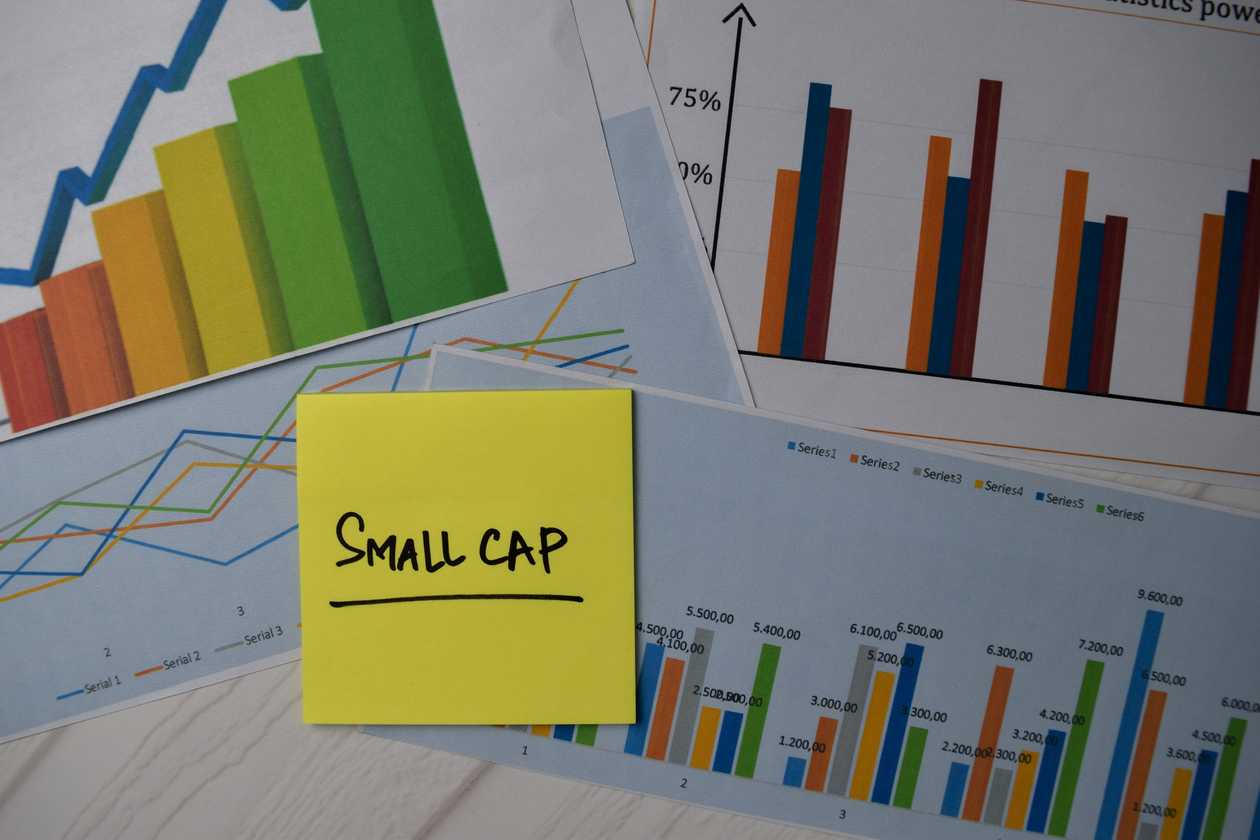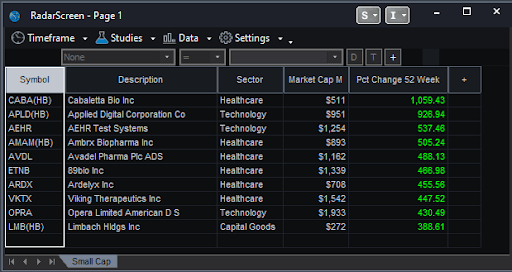
A few of the greatest investments began out as small-cap shares—these with a market capitalization between about $250 million and $2 billion. After all, not each small-cap firm grows right into a behemoth like Amazon or Apple (which just lately grew to become the world’s first firm to succeed in $3 trillion in market cap). Nonetheless, investing in small firms might be rewarding, particularly as a result of they provide better upside progress potential than bigger firms.
When you’re in search of the perfect inventory investments and contemplating small-cap shares, this is an explainer to get you began.
Why is market capitalization vital?
Market capitalization—or market cap—measures an organization’s dimension. It is the whole worth of an organization’s excellent inventory shares, together with publicly traded shares and restricted shares held by firm officers and insiders. To calculate market cap, multiply the corporate’s variety of shares excellent by its present share worth. For instance, an organization with 10 million shares excellent and buying and selling at $20 can have a market cap of $200 million.
Market cap issues as a result of it supplies clues about the place an organization stands within the enterprise improvement course of. For instance, comparatively new public firms with smaller market caps could have extra room for progress. Market cap additionally provides a tough indication of an organization’s stability: Giant-cap firms sometimes are much less weak to volatility than mid or small-cap firms.
In response to FINRA (the Monetary Business Regulatory Authority), the delineation between market cap sizes varies, however you may typically see them damaged down like this:
|
$10 billion to $200 billion |
|
|
$2 billion to $10 billion |
|
|
$250 million to $2 billion |
|
Small-cap inventory vs. large-cap inventory
With market caps of $10 billion or extra, large-cap firms are mature, well-known firms which are key gamers of their industries. Whereas their days of aggressive progress could also be behind them, large-caps sometimes provide stability, and plenty of pay constant dividends. In the meantime, small-caps have traditionally outperformed their bigger counterparts and usually tend to expertise fast income and revenue progress. Nonetheless, that potential progress comes at a worth: small-cap share costs are typically extra risky and delicate to macroeconomic shifts, which might be unsettling to risk-averse traders.
Small-cap inventory vs. mid-cap inventory
Mid-caps are typically established firms in industries experiencing (or anticipated to expertise) vital progress. With market caps between $2 billion and $10 billion, mid-caps provide much less volatility and danger than small-caps—and better progress potential than large-caps. Because of this, mid-cap shares could be a good possibility for traders in search of a stability: average progress potential mixed with average danger.
Small-cap inventory vs. penny inventory
Penny shares have low share costs (below $5) and often commerce over-the-counter (OTC) by way of pink sheets as a substitute of on an trade like most shares. As a result of penny shares have low market caps, they technically fall below the umbrella of small-cap shares—or micro-caps, to be extra particular.
Nonetheless, penny shares are far riskier investments as a result of they lack liquidity, have a large bid-ask unfold, and characterize a stake in an unprofitable firm. Moreover, some penny shares are scams, comparable to pump and dump schemes, the place scammers unfold false or deceptive info to “pump” up costs after which “dump” their shares at an artificially inflated worth.
Small-cap shares and asset allocation
Your danger tolerance and funding targets affect how a lot money it’s best to allocate to small-cap shares versus different forms of investments. Listed here are steered allocation breakdowns by danger tolerance from the American Affiliation of Particular person Traders (AAII):
Benefits and downsides of small-cap shares
Small-cap shares provide excessive progress potential, but it surely’s sensible to think about the professionals and cons earlier than making selections.
Execs
- Greater progress potential than mid- to large-cap firms.
- Decrease share costs could make your preliminary funding simpler.
- Much less competitors from institutional traders.
- Number of firms, from start-ups to established companies.
Cons
- Greater danger as a result of they’re extra delicate to market modifications.
- Unstable costs might be troublesome for some traders to abdomen.
- Much less liquidity means they are often troublesome to promote rapidly at favorable costs.
- Restricted analysis is obtainable as a result of monetary establishments and analysts typically pay extra consideration to bigger firms.
How you can spend money on small-cap shares
When you resolve investing in small-cap shares is best for you, you should purchase and promote shares of particular person firms instantly via an internet dealer, comparable to TradeStation. If shopping for particular person shares appears too dangerous or time-consuming, you possibly can spend money on small-cap centered exchange-traded funds (ETFs) and mutual funds, comparable to iShares Russell 2000 ETF (IWM), Constancy Small Cap Development Fund (FCPGX), or Vanguard Small-Cap Worth Index ETF (VBR).
Needless to say much less analyst analysis is obtainable for small-cap shares versus their bigger counterparts. If you do not have the time, curiosity, or experience to make your individual buying and selling selections, think about working with a monetary advisor which you could find via providers like WiserAdvisor, or a robo-advisor comparable to M1 Finance.
Small-cap inventory indexes
Two primary indexes are used as benchmarks for the small-cap equities market:
- The Russell 2000 Index includes the two,000 smallest shares within the Russell 3000 Index.
- The S&P SmallCap 600 consists of 600 shares with market caps starting from $750 million to $4.6 billion, representing 3% of the U.S. market.
Greatest small-cap shares based mostly on one-year efficiency
To search out the perfect small-cap shares by one-year efficiency, we used TradeStation’s Radar Display to go looking the universe of U.S. shares with market caps between $250 million and $2 billion. We then sorted the outcomes by % change over 52 weeks to search out the highest 10:

A TradeStation Radar Display displaying the highest 10 small-cap firms based mostly on one-year efficiency. Courtesy PowerZone Buying and selling. (Notice: TradeStation consists of “HB” following a logo to designate hard-to-borrow shares for brief sale functions; the extension is just not a part of the image title.)
TIME Stamp: Small-cap shares have each progress potential and better danger
Small-cap shares provide vital progress potential—one thing large-cap firms cannot as a result of their days of aggressive progress are typically behind them. Nonetheless, the upper the potential reward, the upper the danger. Whereas most traders would like to get in early on the following Amazon or Google, small-cap shares are riskier than mid- and large-cap shares as a result of the businesses are much less established, have shorter observe data, and probably have much less entry to capital, making share costs extra risky. Small-cap shares are greatest suited to traders comfy with the added danger in trade for larger potential rewards.
As with every funding, it is important to do your analysis earlier than selecting particular person shares or funds in your portfolio. If you do not have the time, curiosity, or experience to decide on investments, think about working with a monetary advisor or robo-advisor.
Regularly requested questions (FAQs)
Do small-cap shares do properly in a recession?
In response to analysis from Schroders, small-cap shares noticed a 9.9% annualized internet complete return throughout “recession and restoration” intervals over an almost 40-year interval that included quite a few recessions, together with the worldwide downturn of 2007/2008. Giant-cap shares noticed common returns of 4.9% over the identical interval. After all, keep in mind that previous efficiency would not assure future outcomes.
Do small-cap shares do properly throughout excessive inflation?
In response to T. Rowe Worth, smaller firms could show extra resilient than many anticipate in periods of excessive inflation and rising charges. Historical past reveals that U.S. small-cap firms are inclined to outperform their bigger counterparts when inflation and rates of interest rise. Moreover, small-caps have typically led the market restoration following a recession, typically outperforming bigger firms over a number of years.
Some consultants say small caps could do higher than massive caps throughout inflationary environments as a result of it is simpler for them to pivot and make modifications, comparable to rapidly elevating costs or discovering new sources for items and supplies.
Will small-cap shares do properly in 2023?
For the year-to-date interval ending Aug. 18, 2023, the Russell 2000 (which tracks the 2000 smallest firms within the Russell 3000 Index) elevated 6.21%. In the meantime, the Russell 1000—a subset of the Russell 3000 representing the 1000 prime U.S. firms by market cap—was up 14.10%. And the Russell Prime 50, which incorporates the 50 largest shares within the Russell 3000 universe, rose 25.62%.
In response to Royce Funding Companions, a small-cap specialist, the 12 months started with a bonus for small-cap shares, however that edge solely lasted till early February. Nonetheless, it says small-cap efficiency may see a lift within the coming months as a recession appears much less and fewer seemingly.
